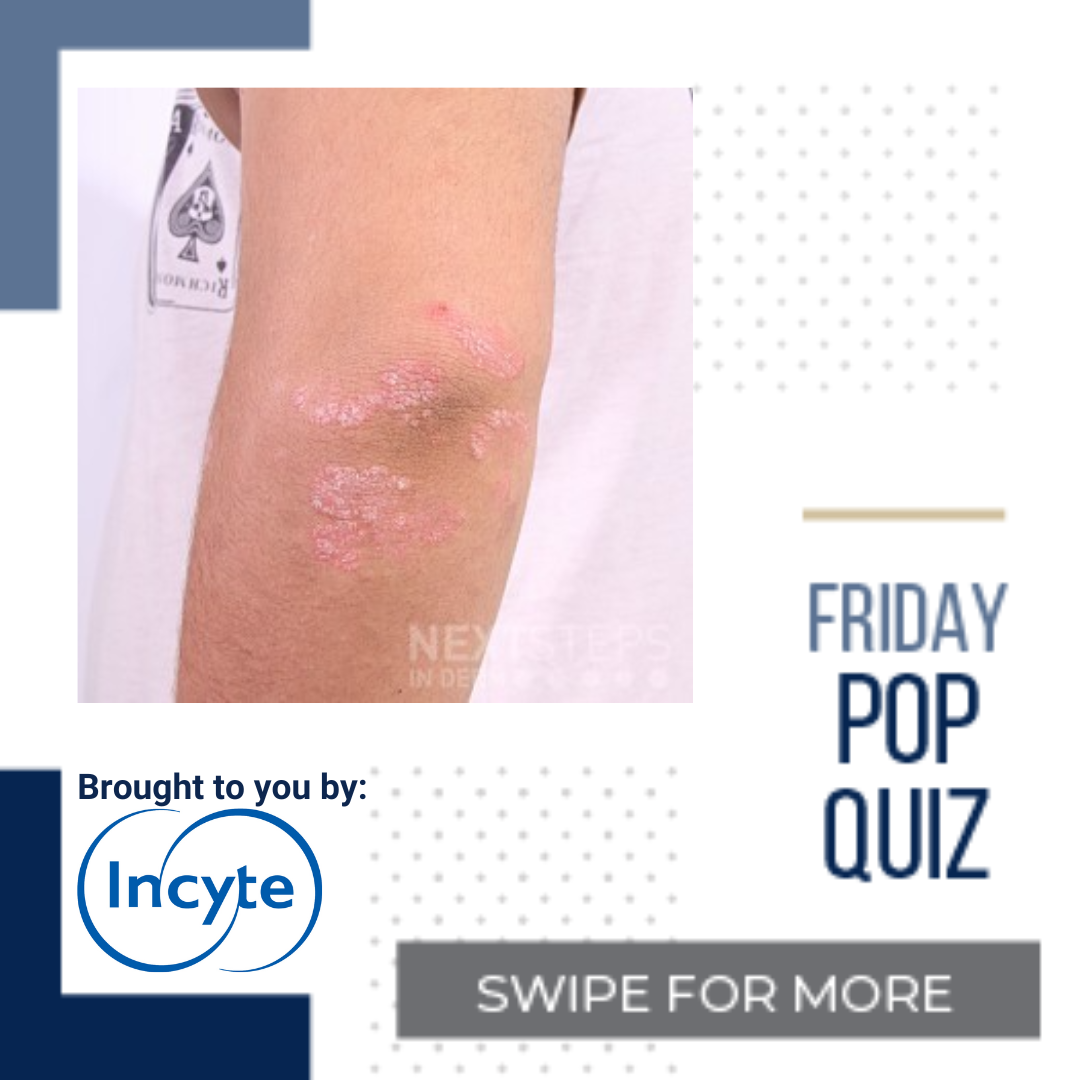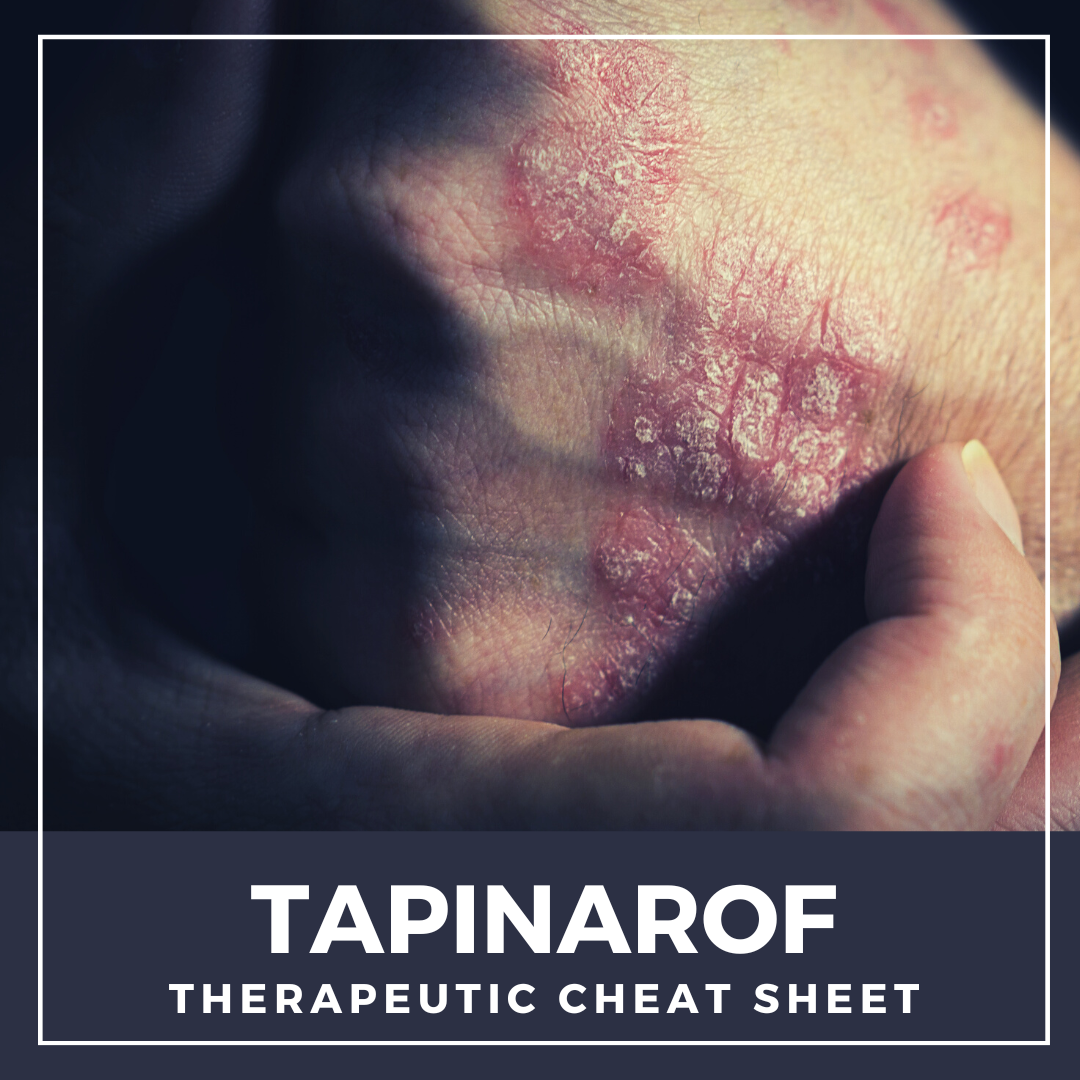Skin Rash – Friday Pop Quiz 6/23/2023
 Which of the following treatments for the shown rash with 15% body surface area (BSA) involvement is least likely to be associated with an infection?
A. Methotrexate
B. Cyclosporine
C. Adalimumab
D. Infliximab
E. Acitretin
To find out the correct answer and read the explanation, click here.
Brought to you by our brand partner
…
Which of the following treatments for the shown rash with 15% body surface area (BSA) involvement is least likely to be associated with an infection?
A. Methotrexate
B. Cyclosporine
C. Adalimumab
D. Infliximab
E. Acitretin
To find out the correct answer and read the explanation, click here.
Brought to you by our brand partner
…
 Which of the following treatments for the shown rash with 15% body surface area (BSA) involvement is least likely to be associated with an infection?
A. Methotrexate
B. Cyclosporine
C. Adalimumab
D. Infliximab
E. Acitretin
To find out the correct answer and read the explanation, click here.
Brought to you by our brand partner
…
Which of the following treatments for the shown rash with 15% body surface area (BSA) involvement is least likely to be associated with an infection?
A. Methotrexate
B. Cyclosporine
C. Adalimumab
D. Infliximab
E. Acitretin
To find out the correct answer and read the explanation, click here.
Brought to you by our brand partner
… 

 Next Steps in Derm, in partnership with ODAC Dermatology, Aesthetic & Surgical Conference, interviewed Dr. George Han, associate professor of dermatology at the Donald and Barbara Zucker School of Medicine at Hofstra/Northwell. Dr. Han shares why it’s an exciting time to treat psoriasis, and why the developments of the past year have bolstered the clinician’s armamentarium. Watch and lear …
Next Steps in Derm, in partnership with ODAC Dermatology, Aesthetic & Surgical Conference, interviewed Dr. George Han, associate professor of dermatology at the Donald and Barbara Zucker School of Medicine at Hofstra/Northwell. Dr. Han shares why it’s an exciting time to treat psoriasis, and why the developments of the past year have bolstered the clinician’s armamentarium. Watch and lear …  SELF recently posted an article about the hidden mental health effects of eczema. How should dermatology clinicians approach their eczema patients about the mental impacts of this skin condition? When should a dermatologist refer to a mental health professional?
For expert advice, I reached out to dermatologist and clinical psychologist Richard Fried, MD, PhD, clinical director of Yardley Derm …
SELF recently posted an article about the hidden mental health effects of eczema. How should dermatology clinicians approach their eczema patients about the mental impacts of this skin condition? When should a dermatologist refer to a mental health professional?
For expert advice, I reached out to dermatologist and clinical psychologist Richard Fried, MD, PhD, clinical director of Yardley Derm …  Tapinarof cream is a non-steroidal topical medication that was recently FDA approved in 2022 for the treatment of mild, moderate, or severe plaque psoriasis in adult patients. As biologic medications have continued to grow and become exceedingly present in the treatment of moderate to severe psoriasis, there has been very minimal, if any innovation in the space of topical treatments. Additionally, …
Tapinarof cream is a non-steroidal topical medication that was recently FDA approved in 2022 for the treatment of mild, moderate, or severe plaque psoriasis in adult patients. As biologic medications have continued to grow and become exceedingly present in the treatment of moderate to severe psoriasis, there has been very minimal, if any innovation in the space of topical treatments. Additionally, …  The June issue of the Journal of Drugs in Dermatology (JDD) features original articles with topics ranging from pediatric acne, rosacea, androgenetic alopecia, precision medicine, infantile hemangiomas, and many more. Check out this month’s issue highlights straight from the JDD Editor’s desk:
The Many Faces of Pediatric Acne: A Practical Algorithm for Treatment, Maintenance Therapy, and …
The June issue of the Journal of Drugs in Dermatology (JDD) features original articles with topics ranging from pediatric acne, rosacea, androgenetic alopecia, precision medicine, infantile hemangiomas, and many more. Check out this month’s issue highlights straight from the JDD Editor’s desk:
The Many Faces of Pediatric Acne: A Practical Algorithm for Treatment, Maintenance Therapy, and …